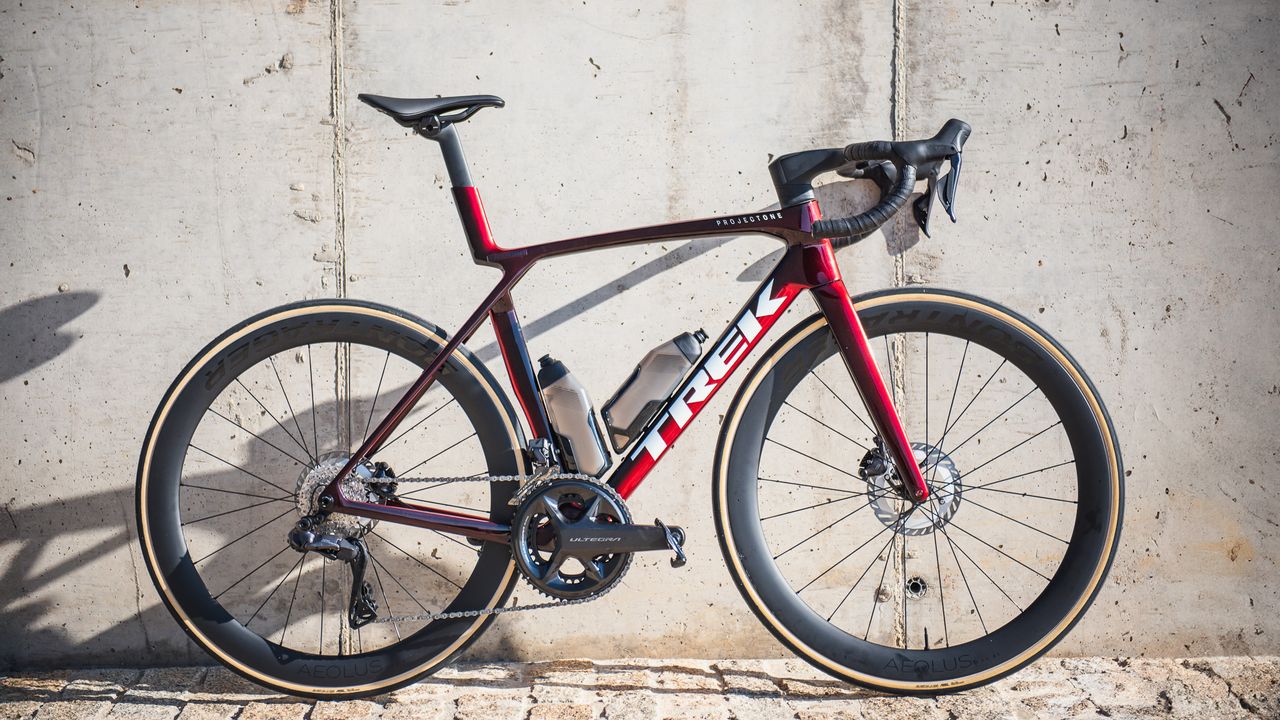
It’s hard to conjure a bike more iconic to pro cycling than the Trek Madone. The Madone was born out of the glory years of Lance Armstrong’s (now-shamed) successive Tour de France wins, and named after his key training climb – the Col de la Madone. But the Trek Madone achieved the rare feat of surviving the Texan’s fall from grace and living on independently with its own unique legacy.
The Madone Gen 8 is arguably the most true-to-nature version of Trek’s flagship racer since its original iteration - combining the aerodynamics of the previous Madone with the lightweight design of the Emonda and doing away with the latter model altogether in the process. It brings Trek’s entire performance road bike line back to basics - the Domane is still there for the comfort-cum-cobble market, but the Madone is now Trek’s one and only flagship racer. In the years before the dedicated aero bike, that was the norm, and Trek claims to have returned to that with no downside.
Trek claims that the new Madone SLR hits a frame weight of 765g and a fork weight of 370g, making it the same weight as the outgoing Emonda. It also manages that while exceeding the aerodynamics performance of the previous aero-focussed SLR by a slender 0.1 watt at 22mph (and marginally faster all the way up to 40mph).
With its shift back to narrow tubes and lightweight performance, alongside the end of the Emonda, it seems fitting to pull back and take a look at how the Madone evolved to reach this latest and perhaps most complete iteration.
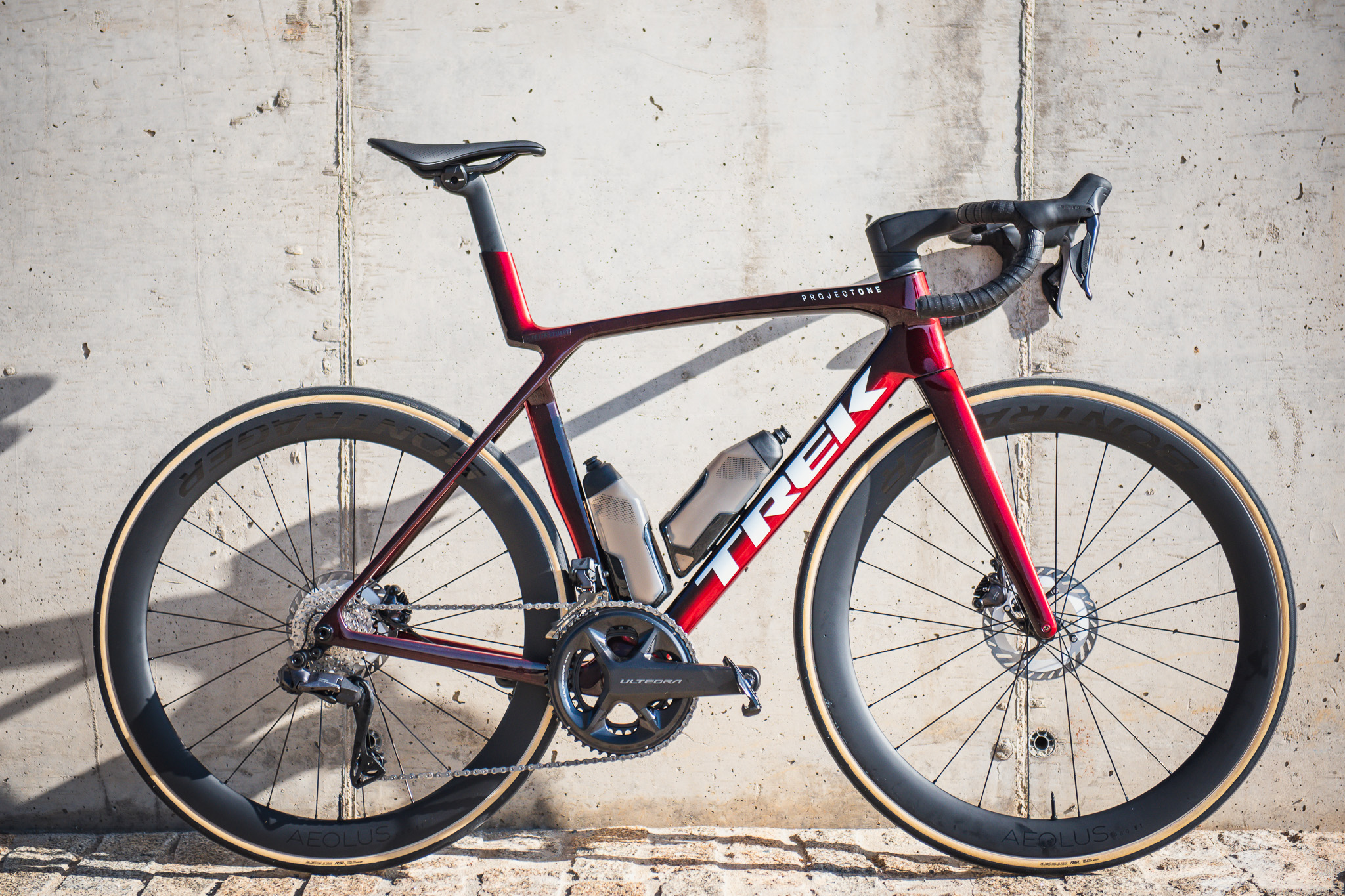
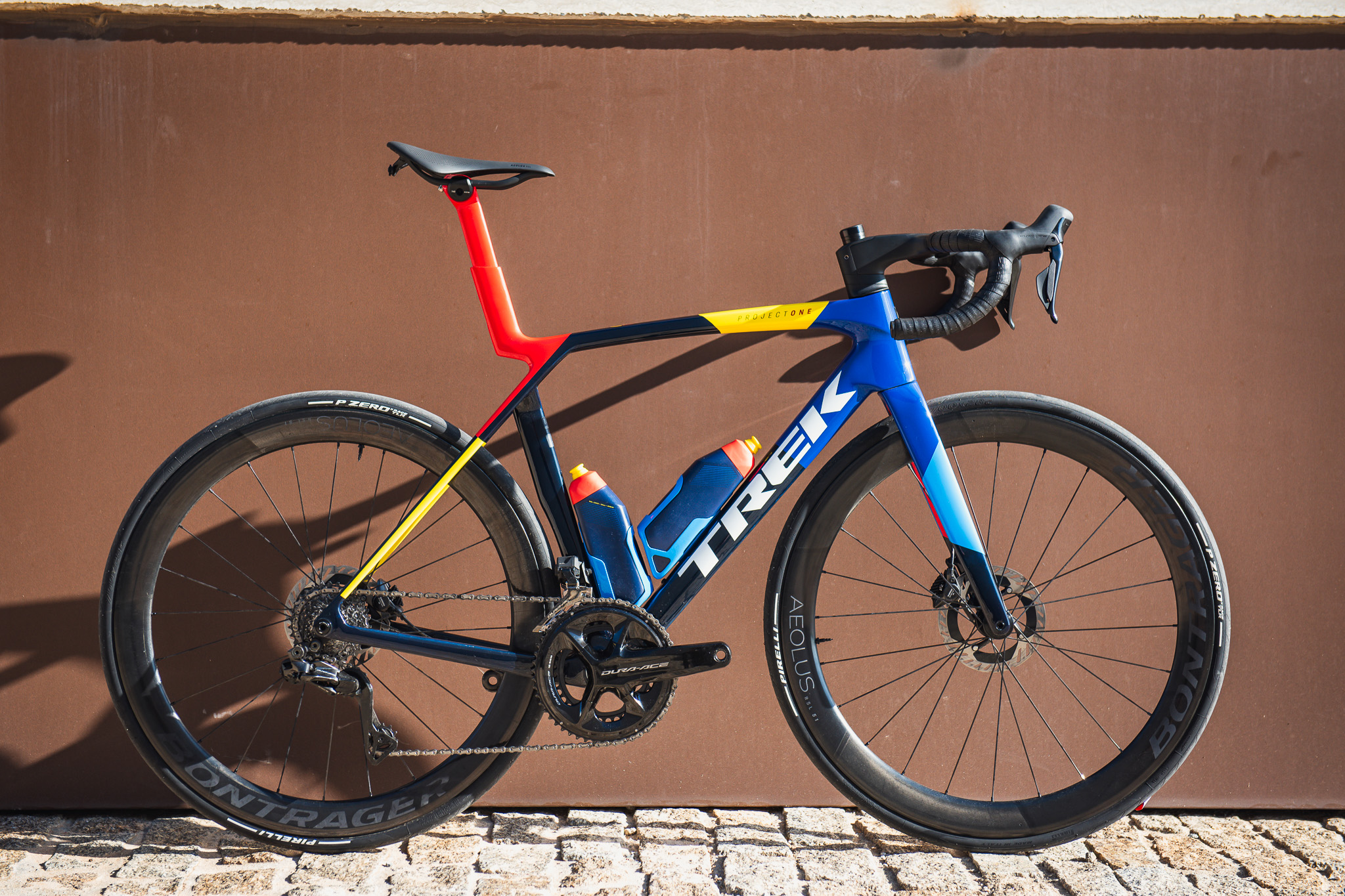
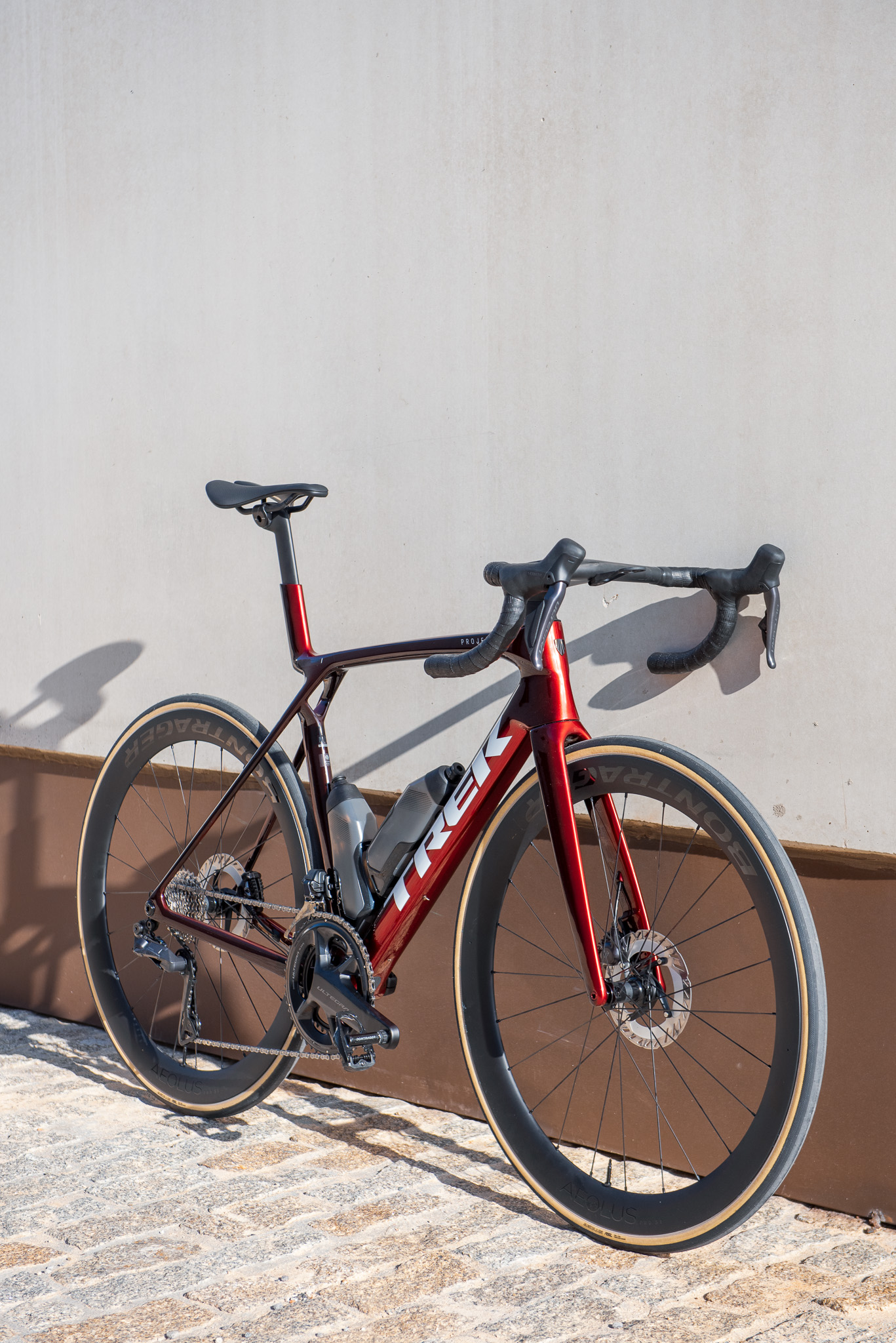
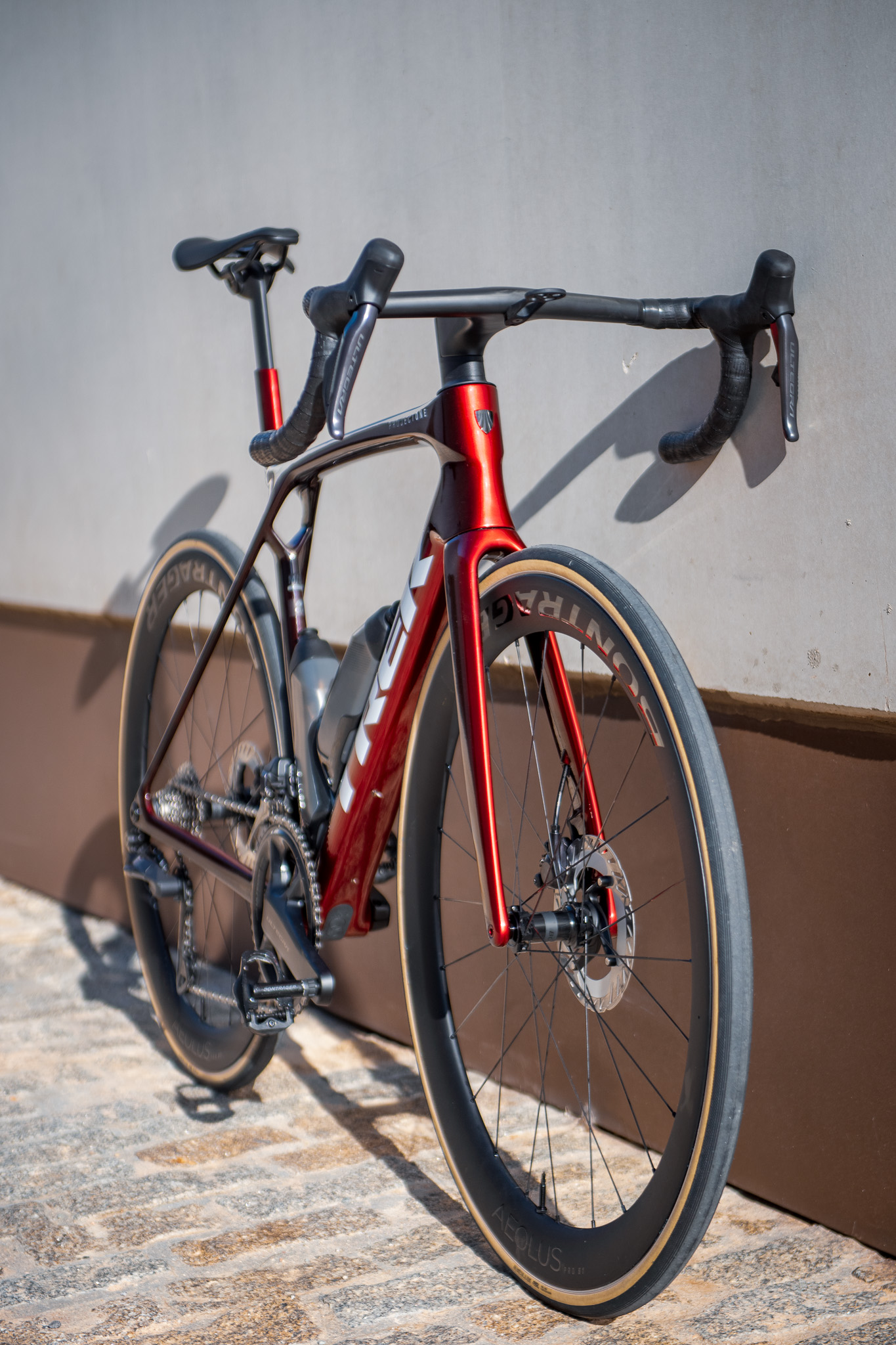
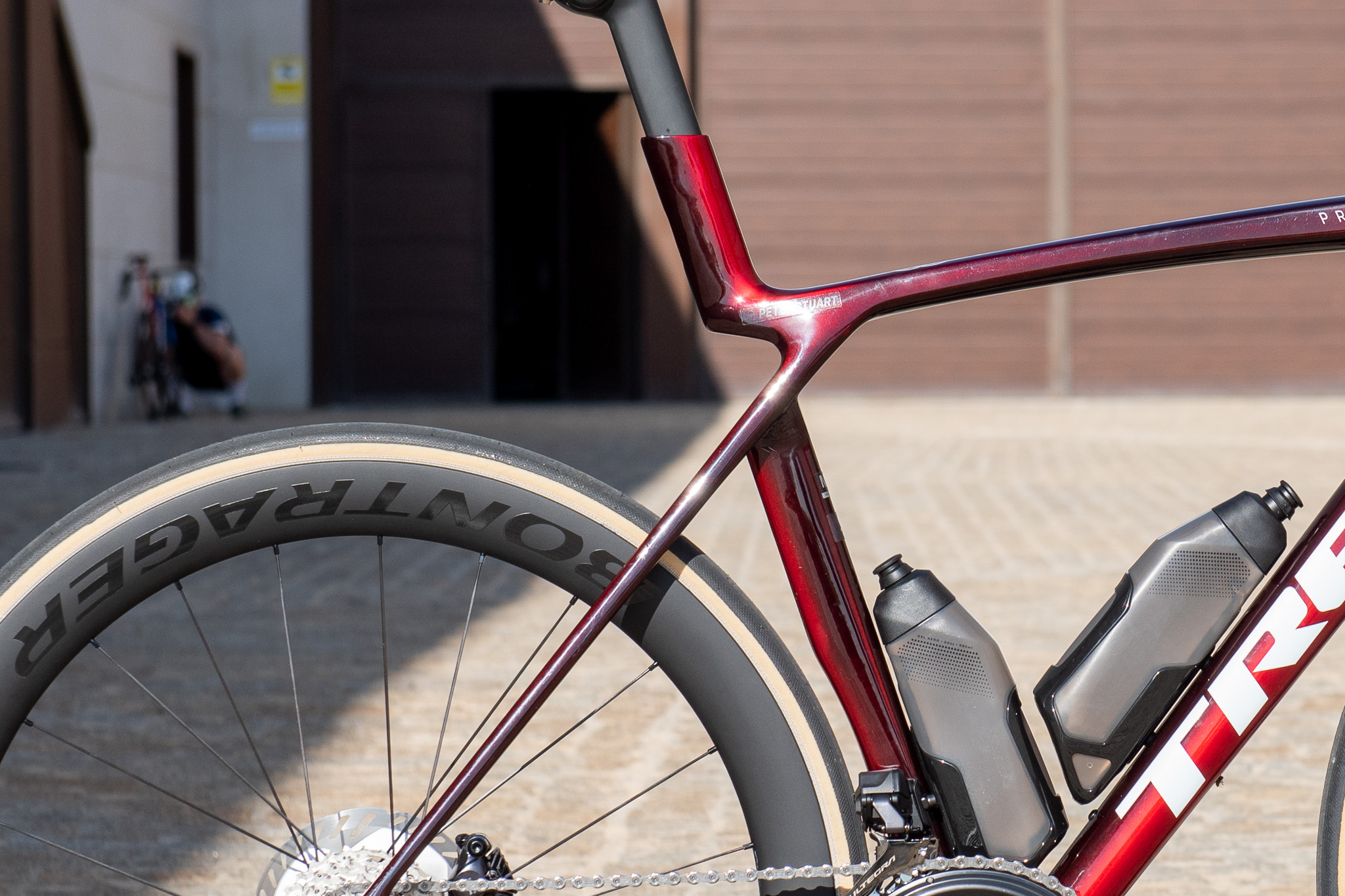
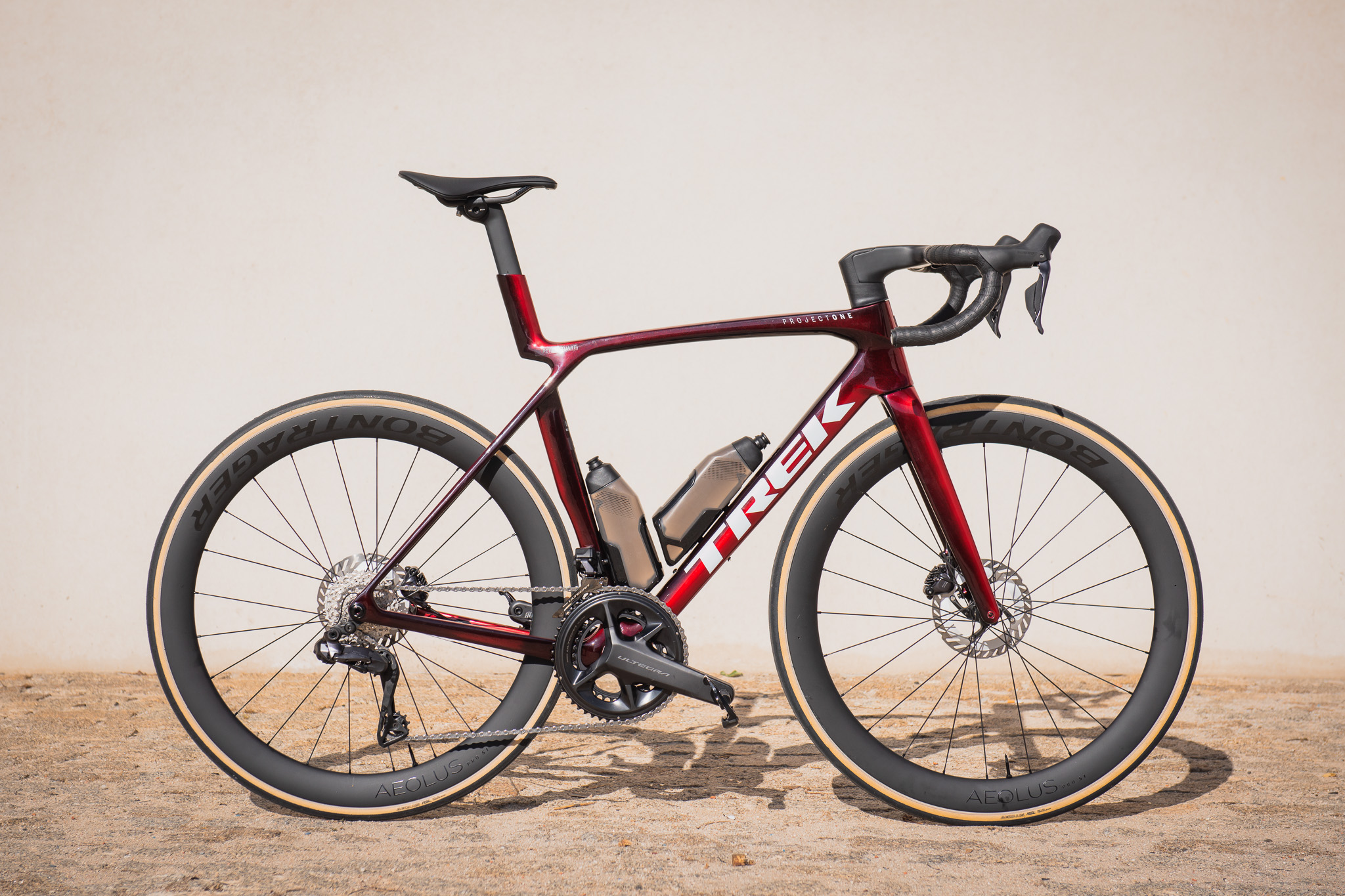
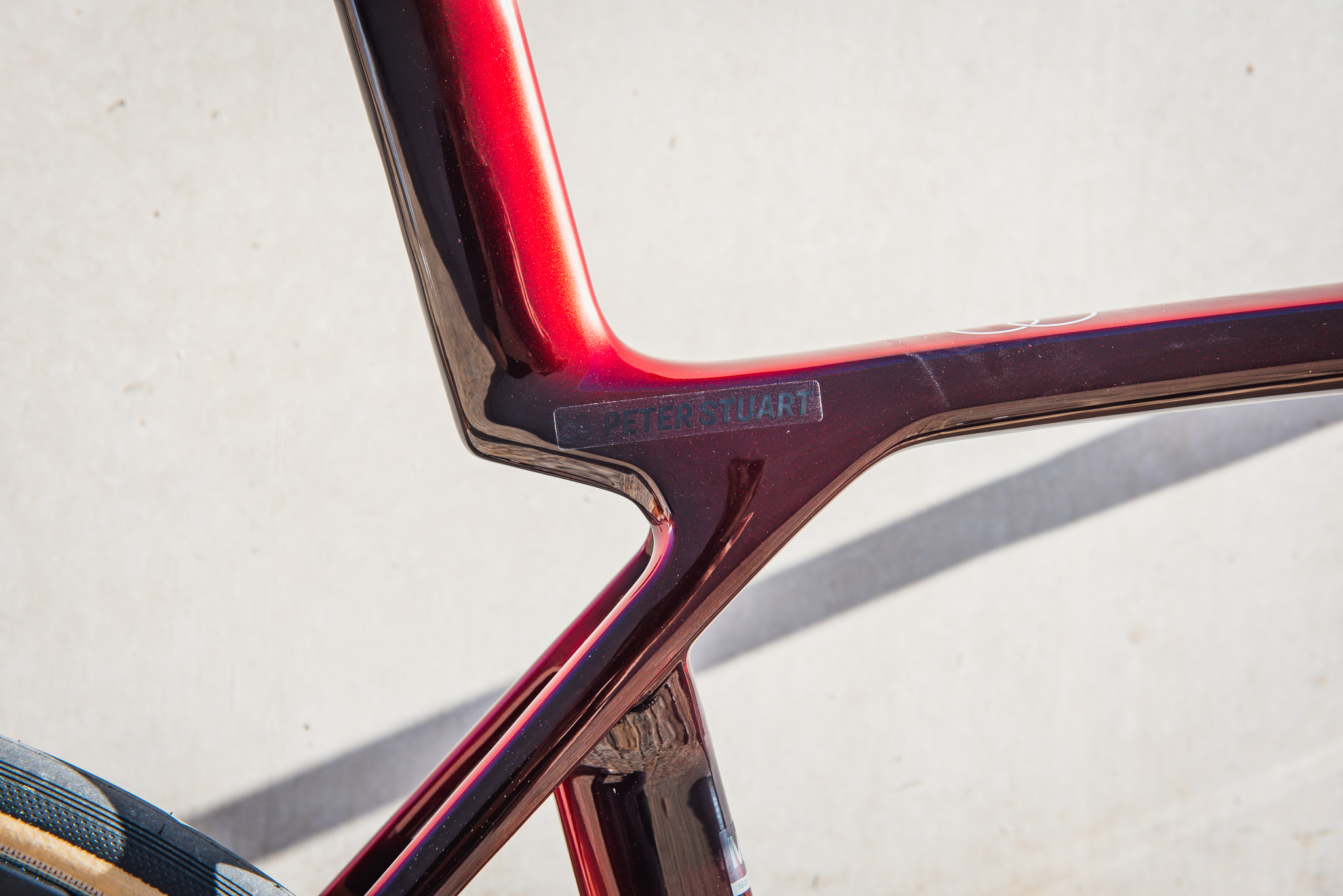
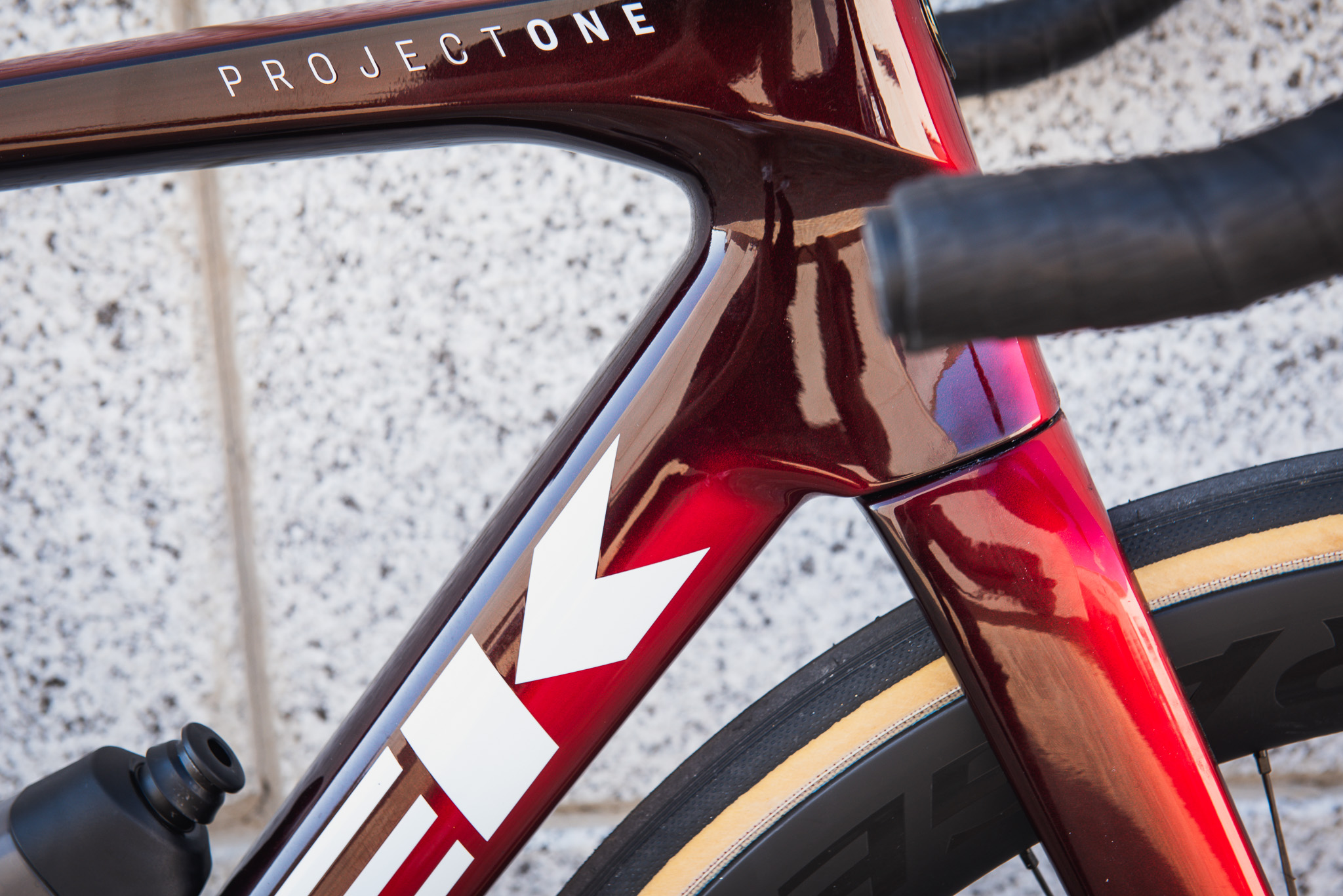
The Trek Madone - from the start and back again
Originally billed as an aerodynamic lightweight racer in 2003, it didn't dazzle in weight terms, and aerodynamics was limited to a fin on the seat tube on slightly later models. The bike arguably didn’t disrupt that status quo until its second iteration in 2007, and in 2009 came a sub-900 g OCLV masterpiece in the bike’s third and most iterative design. However, it still looked, largely, like a bike.
In 2015, that was no longer the case, as Trek unveiled a new Madone, which completely transformed the genre. In (unintentional) sync with the launch of the Specialized Venge Vias, the Madone 9 series was the first road bike to completely conceal its front cabling – making the front of the bike completely clean with the help of integrated Bontrager brakes developed specifically for the Madone. To facilitate that, the headtube of the bike had retractable carbon flaps which would open when the handlebars were moved to an acute enough angle, in order to let the brakes pop out from within the headtube.
This was a truly unhinged design (albeit with actual hinges) which offered a seismic leap in aerodynamic performance and overall speed - I attended the launch in 2015 and assumed I was suffering from jetlag delirium. The weight suffered as a result of the aero design. That was exacerbated by the IsoSpeed decoupler on the seatpost, which compensated for the harsh aero tubes. In the era of rim brakes and early aerodynamic advances, though, overall weight being a kilo over the UCI minimum weight limit was nothing compared to the enormous watt savings.
Since then, the Madone developed an adjustable IsoSpeed and gained disc brakes, which negated the carbon flaps, before gradually converging back toward a more all-around bike. The 2022 update of the Madone sided for lighter weight at the expense of the IsoSpeed, providing instead an exhaust-like cantilever chasm in the seat tube known as the IsoFlow - still present in the design of the Madone Gen 8.
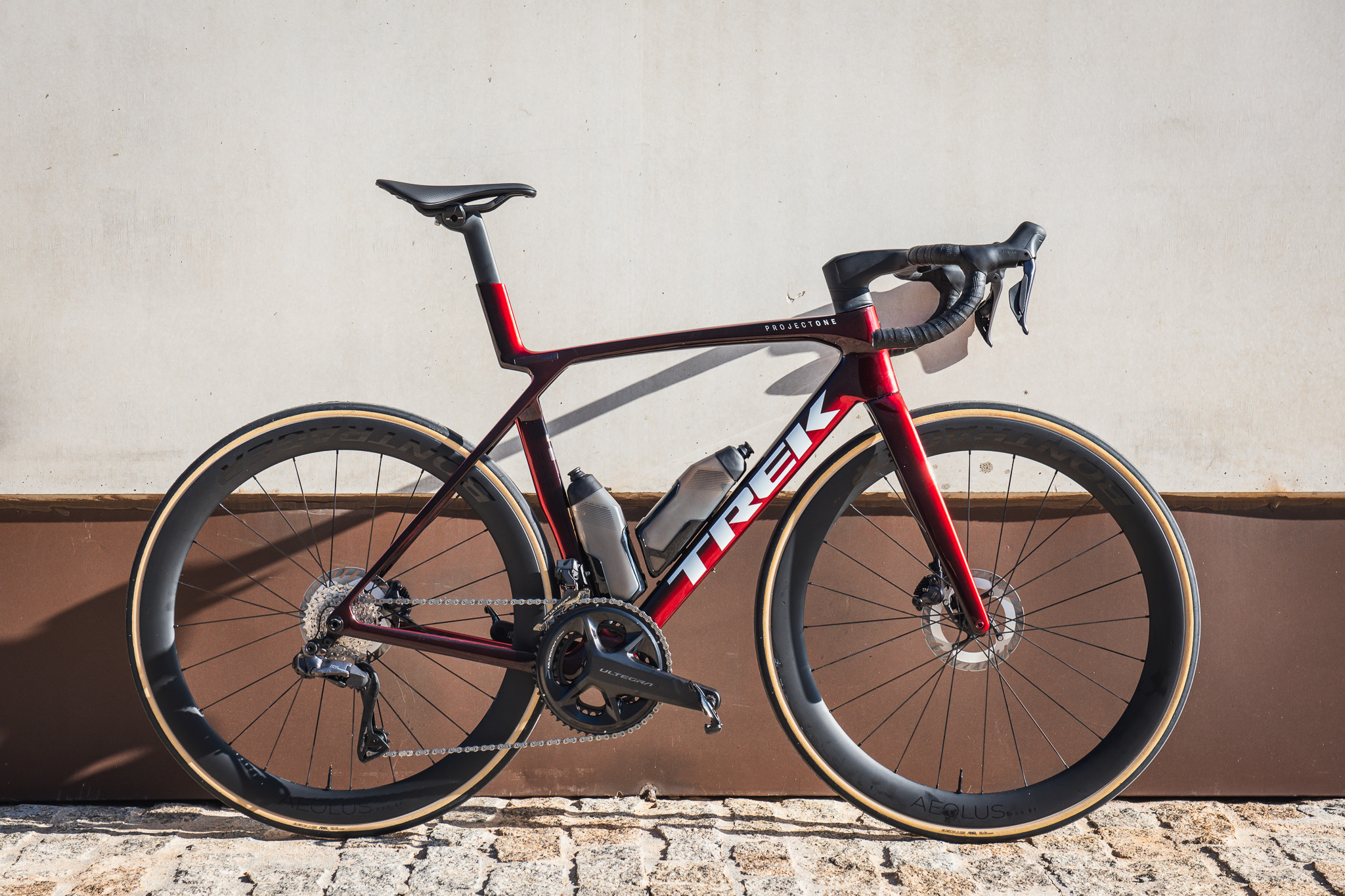
Indeed, having already taken a step toward being an all-around racer, the Gen 8 looks like the last generation Madone has been on a diet with thinner tubes, radically reshaped for aerodynamics and comfort, all powered by improved 900 OCLV Carbon – Trek’s proprietary blend of carbon fibre.
On the whole, though, Trek’s goal was clearly to make an irrefutably fast bike, which wins both on the ascents, descents and solo into the wind.
More of everything
“To our knowledge this is one of the if not the fastest road race bike that exists within the professional peloton and in the market,” says Jordan Roessingh, Director of Road bikes at Trek.
“When you're comparing both attributes [weight and aero] of either previous platform, it's 77 seconds per hour faster than Emonda. So that's an enormous difference in aerodynamic performance compared to the previous Emonda despite the fact it's the same weight.”
The real sell is that the new Madone nails the Emonda’s weight while matching the previous Madone’s aerodynamics. “When you're comparing to a Madone, it's the exact same aerodynamic performance,” Roessingh says. “But 320g lighter – so an enormous weight saving between those two. So again, we're taking the best of both worlds here and merging them and still achieving the highest performance of both attributes.”

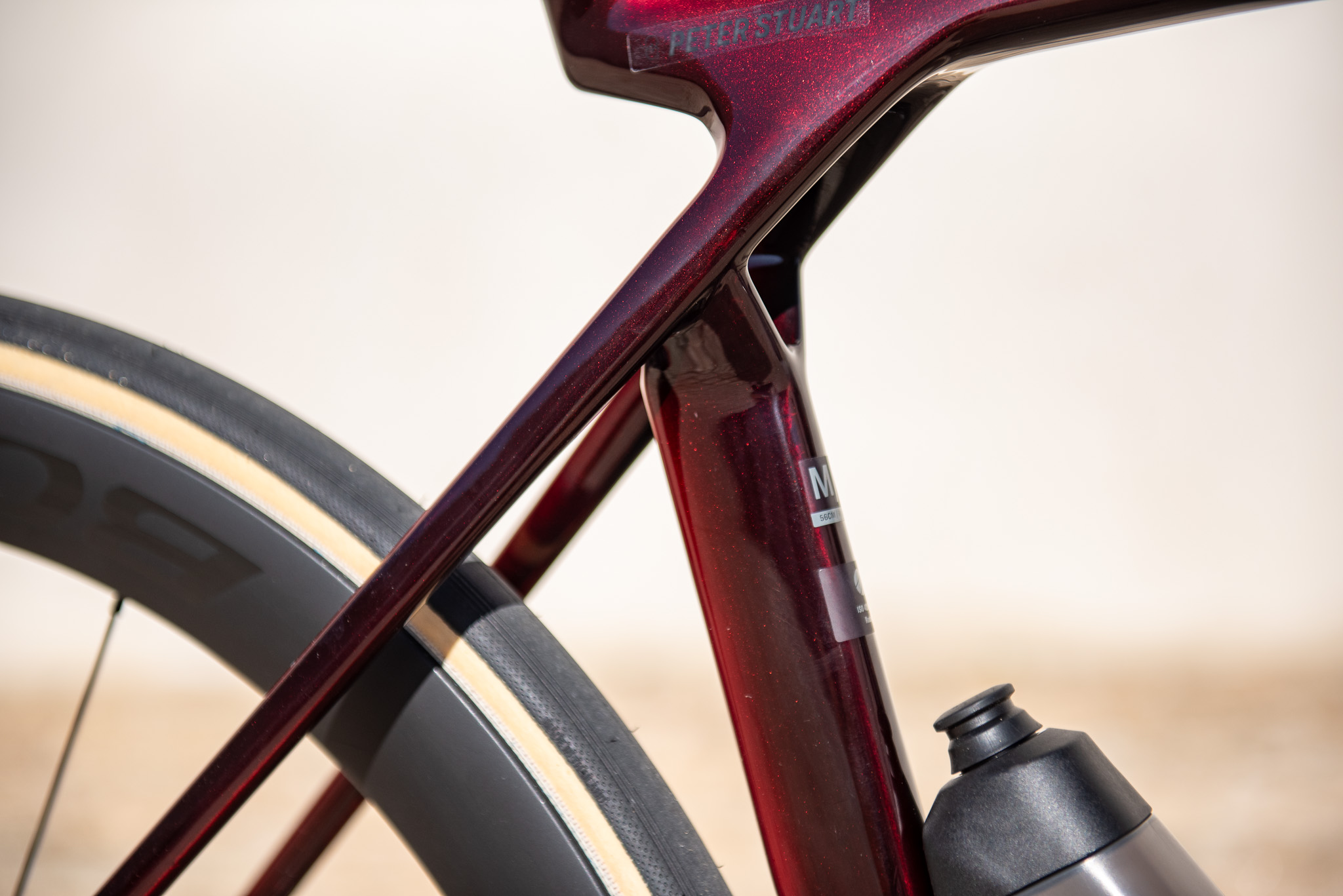
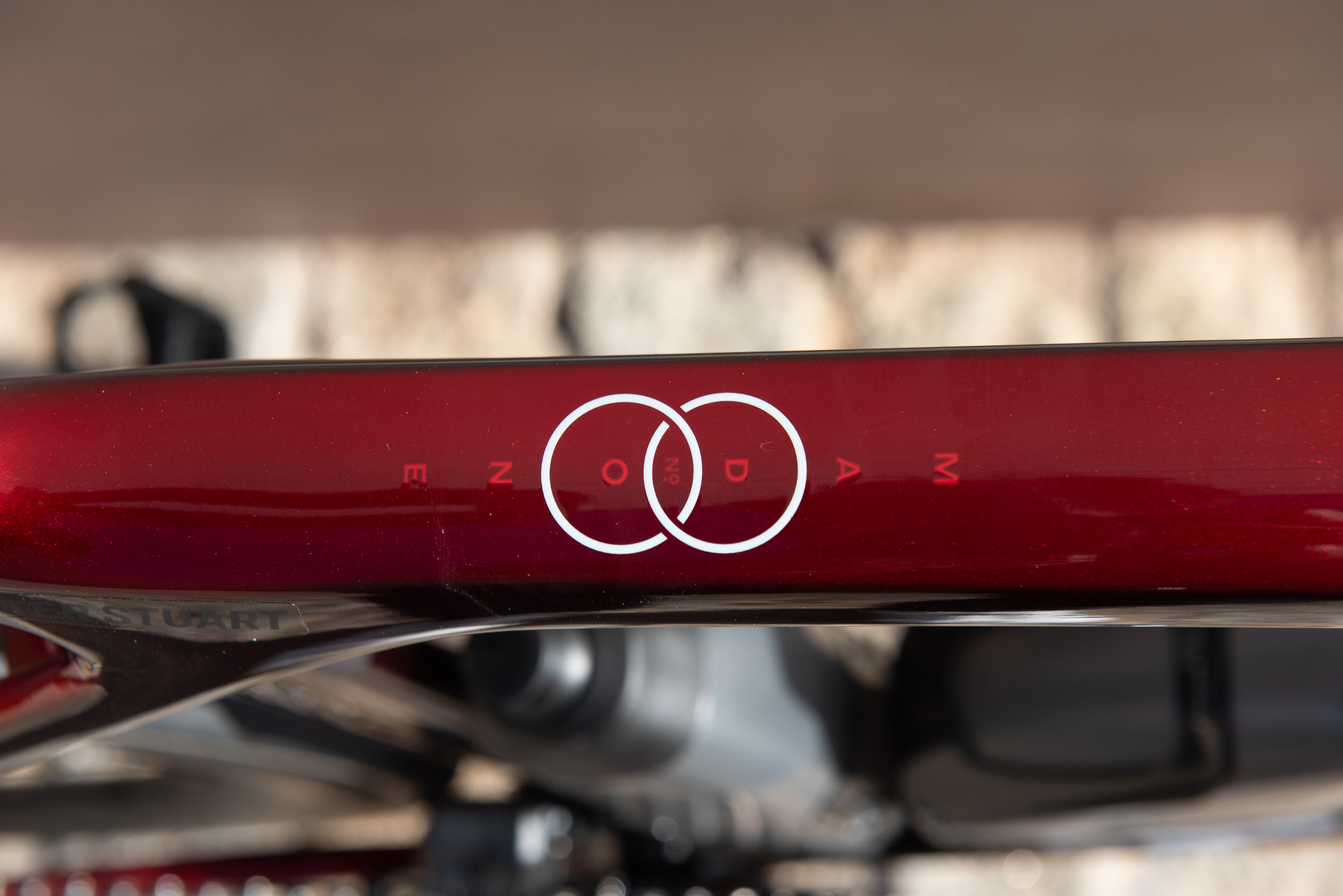
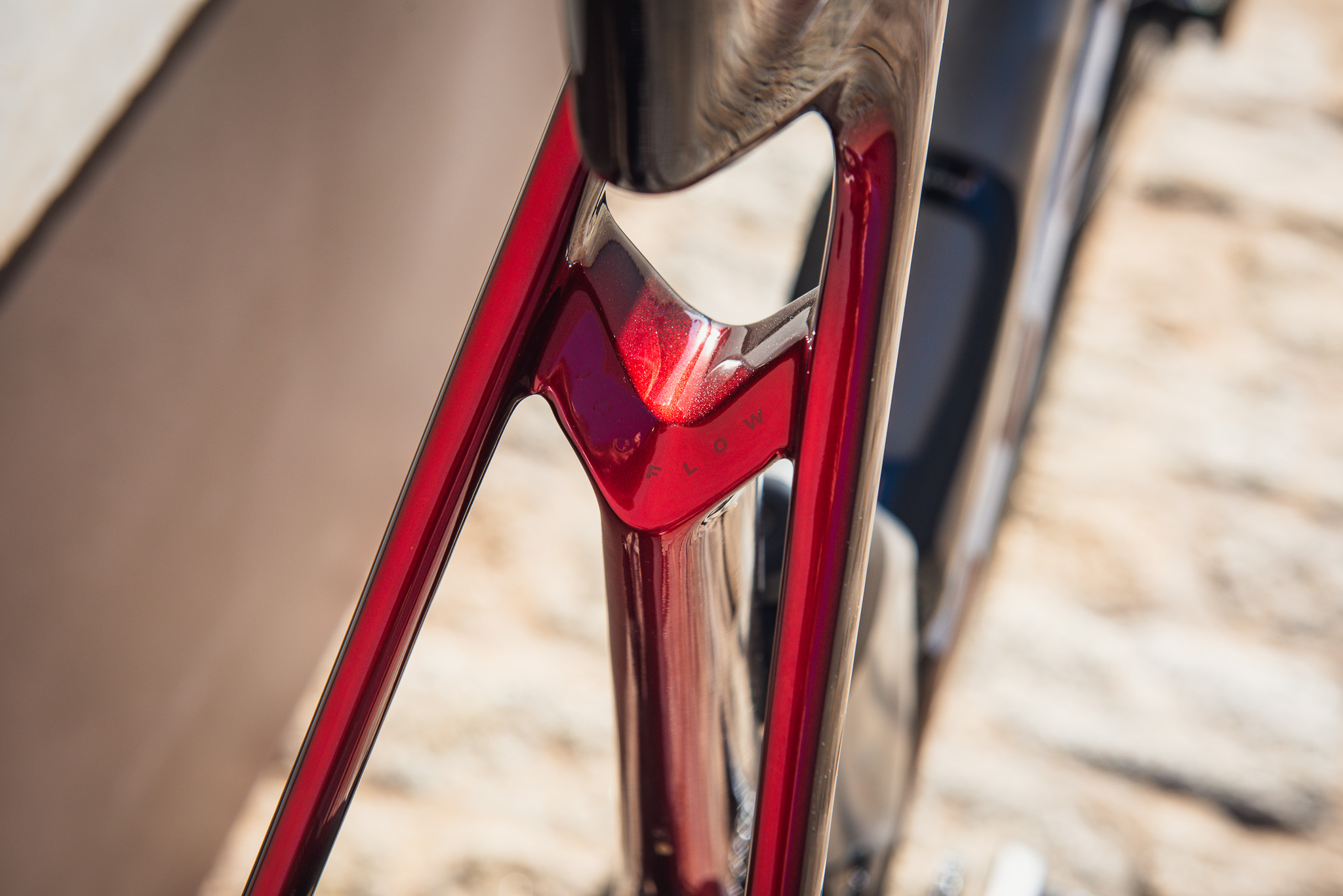
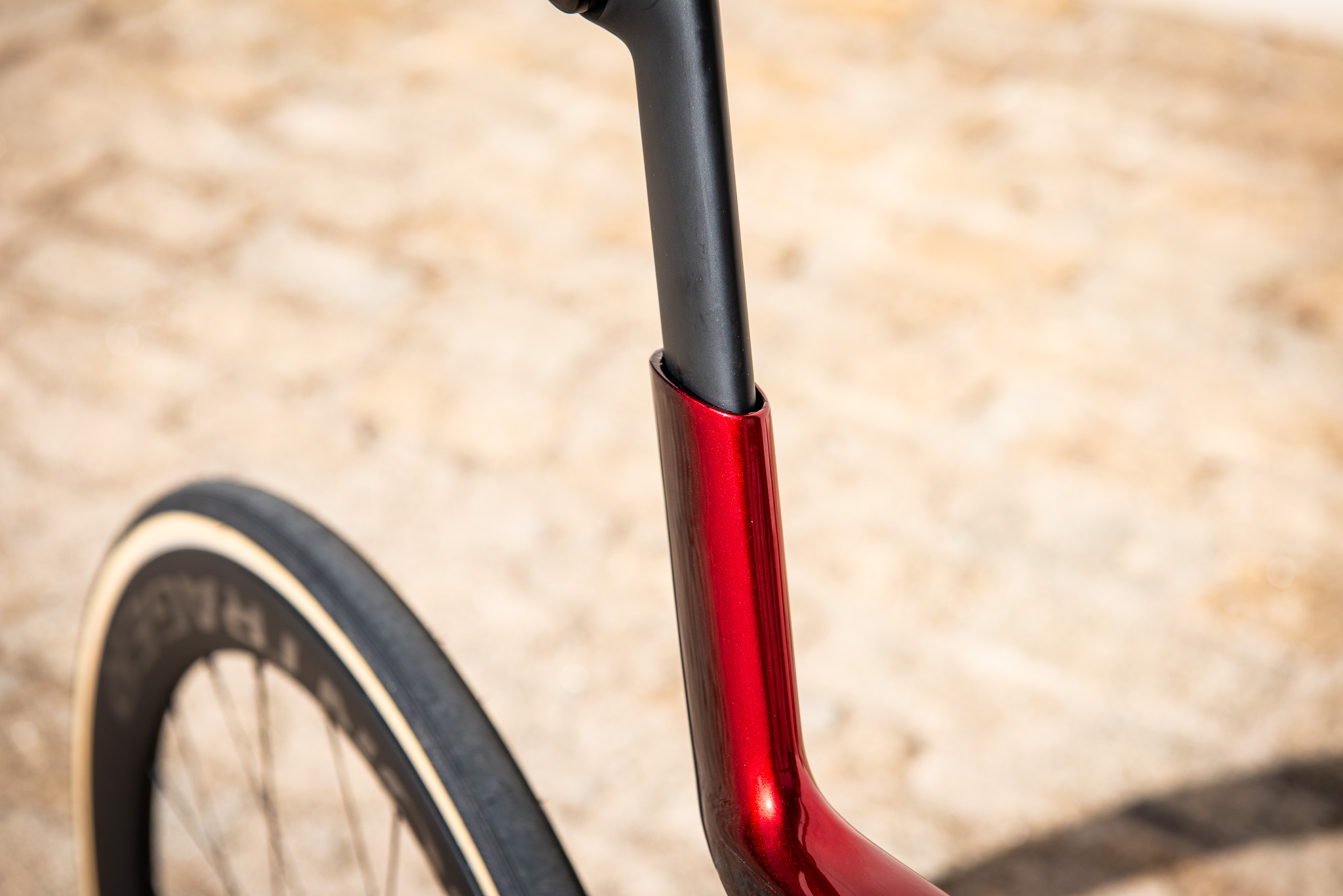
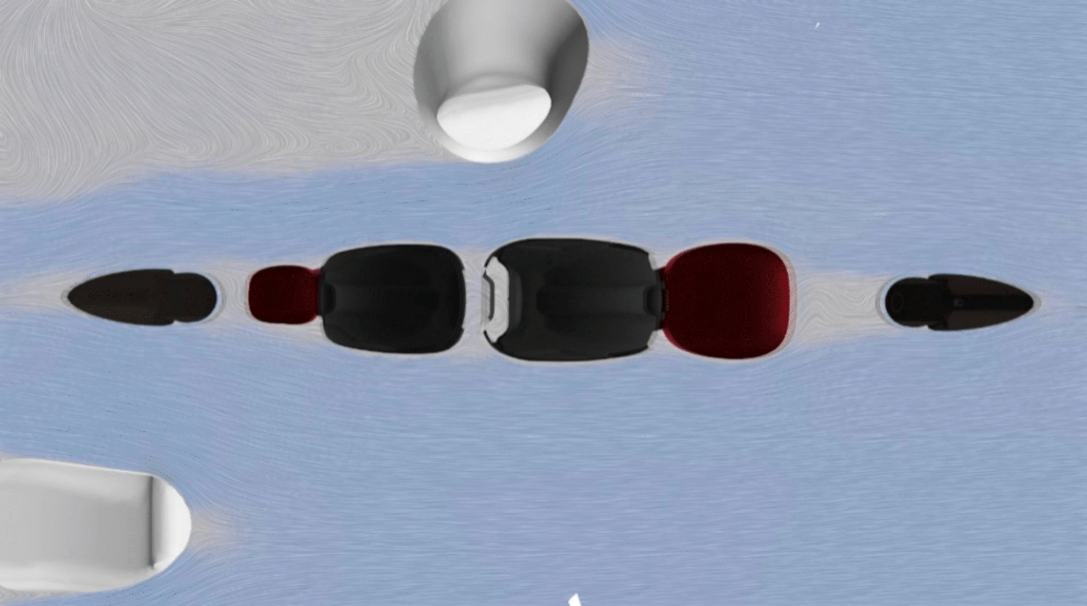
The new tube shapes play a big role in the lower weight, better ride and claimed aero benefits. It’s odd as the cross-sections of the aero tubes look blunt and devoid of aerofoil or Kamm-tail shaping. However, when taken as a whole system, sandwiched between a horizontal cross-section of the front rim profile and the aero bottles, the tubes form a sort of neat, holistic aerofoil.
Said with almost a grimace, as it’s become an industry cliche, Trek boasts that the bike has better vertical compliance alongside more lateral stiffness. The central IsoFlow seat tube gap claims an 80% improvement in the Madone’s vertical compliance and a 24% improvement over the IsoFlow-less Emonda.
The new Madone carries over the same splayed integrated bar concept as the Gen 7 - positioning the rider 2cm inward on the hoods compared to the drops for aero gains while sitting on the hoods (which has increasingly become the standard aero position).
Strangely, Trek claims the handlebars are less aerodynamic than the Gen 7 iteration, but with a wider cross-section offer a better overall aero performance when air interacts with the bars and then the rider.
In another gravel-like nod to versatility, the new Madone has clearance for 33mm tyres - up from 28mm on the previous Madone. Trek argues that the previous Madone could have handled 30mm or larger in most rim combinations, and for the Gen 8, similarly, 33mm is a conservative estimate. We can believe that, given the visible clearance.
Of course, while 33m clearance dwarves the clearance of aero bikes of yesteryear, the most recent trends have pushed even wider, and we'll return to this point later.
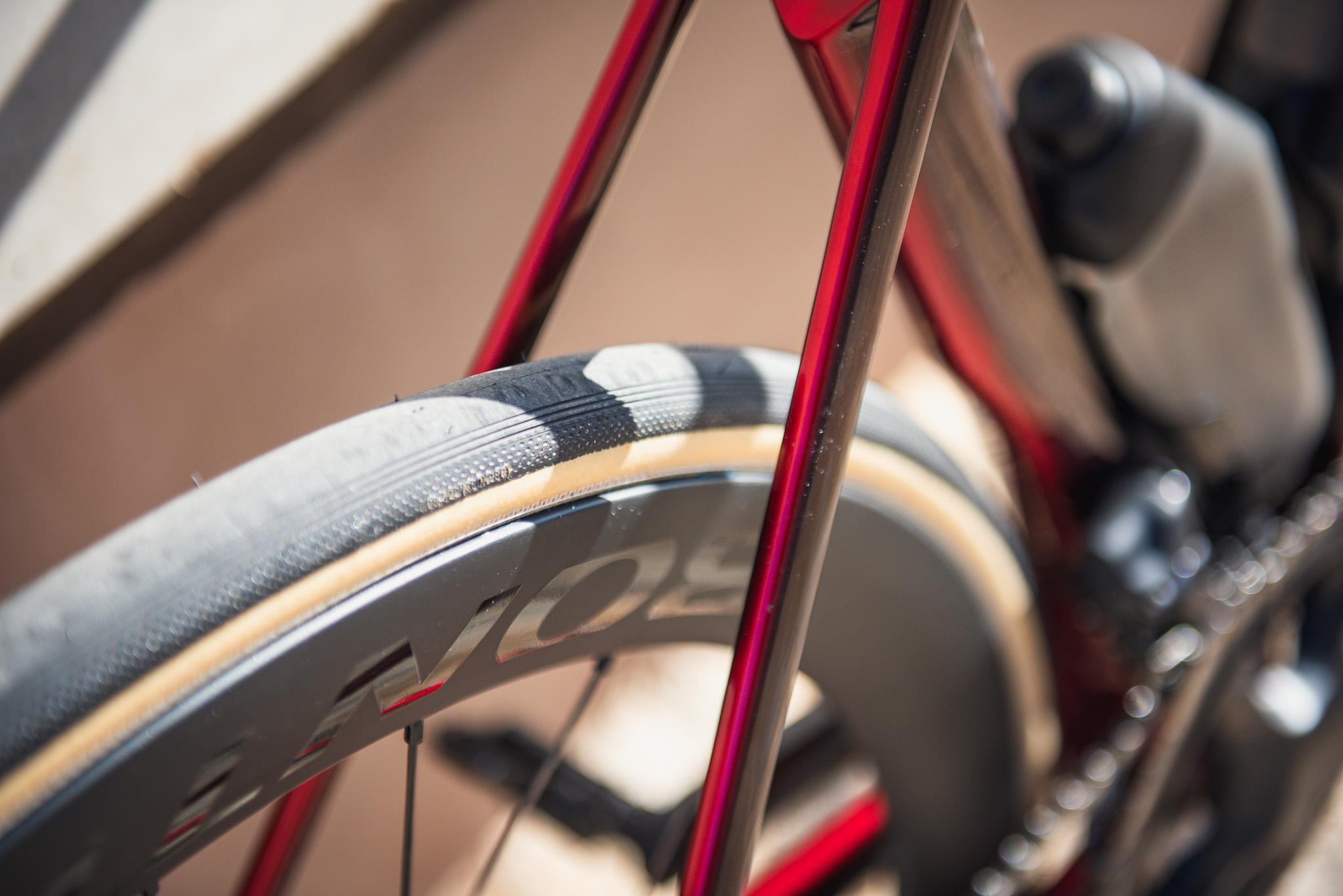
Bottled-up speed
Trek’s aero bottle design is intriguing because this is ground that the bike market had trodden before. Aero water bottles have been commonplace in triathlon and time trial for over a decade, and have crept up into the build of aero road bikes from time to time, but never managed to break through.
It’s also intriguing because the Madone is slower than its previous iteration with round bottles. What’s more, without any bottles on the bikes at all, it’s slower, so no ditching your bottles at the base of the climb.
Given the fixation on aero gains, it’s surprising that the claimed 3.7-watt gains with Trek’s RSL water bottles haven’t been adopted across the peloton. In reality, though, aero bottles present a few issues. Typically, the aero cages restrict the use of round bottles, while any minor challenge in liberating a bottle is a big issue for a WorldTour rider on a critical climb. Trek claims to have solved both of those problems.
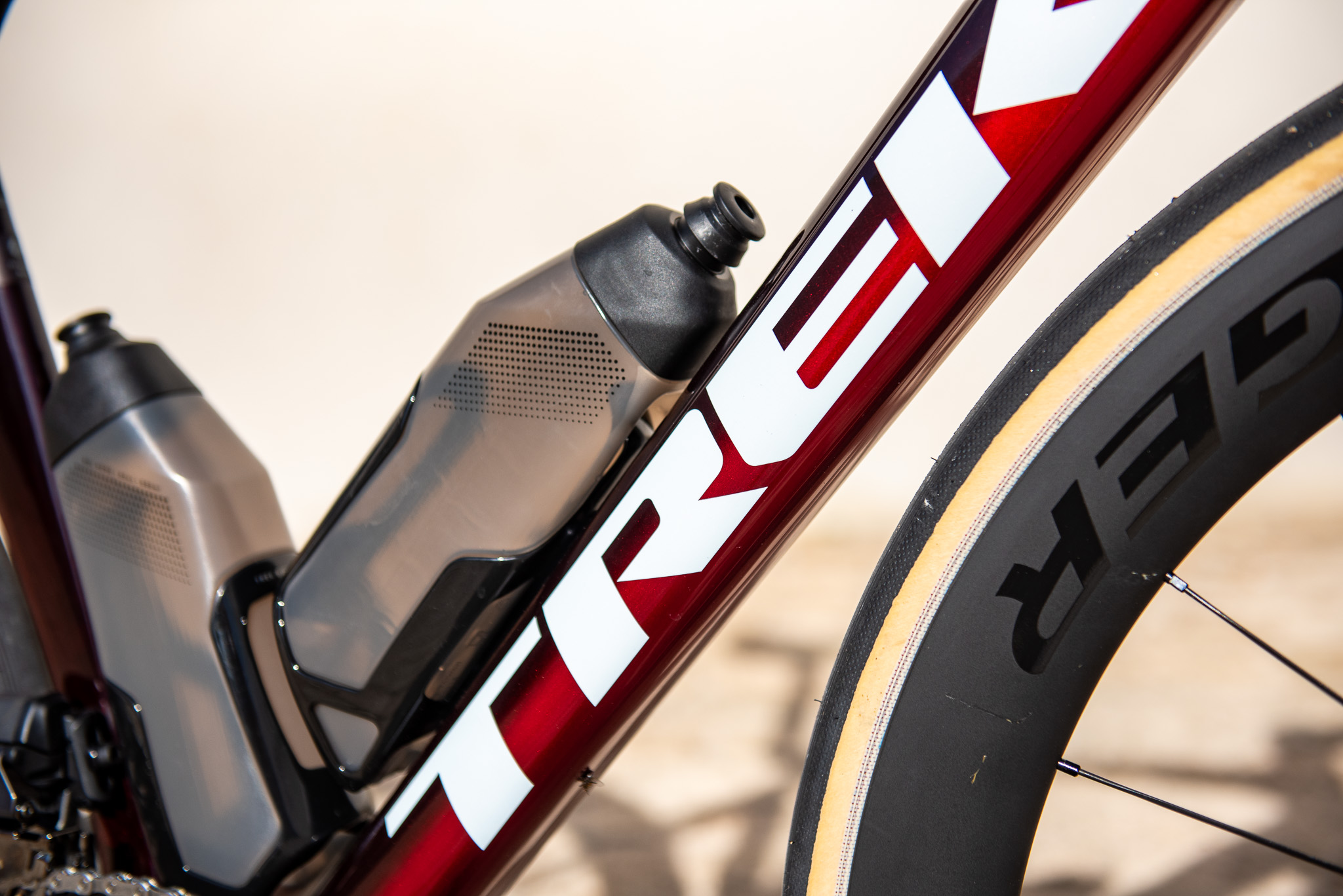
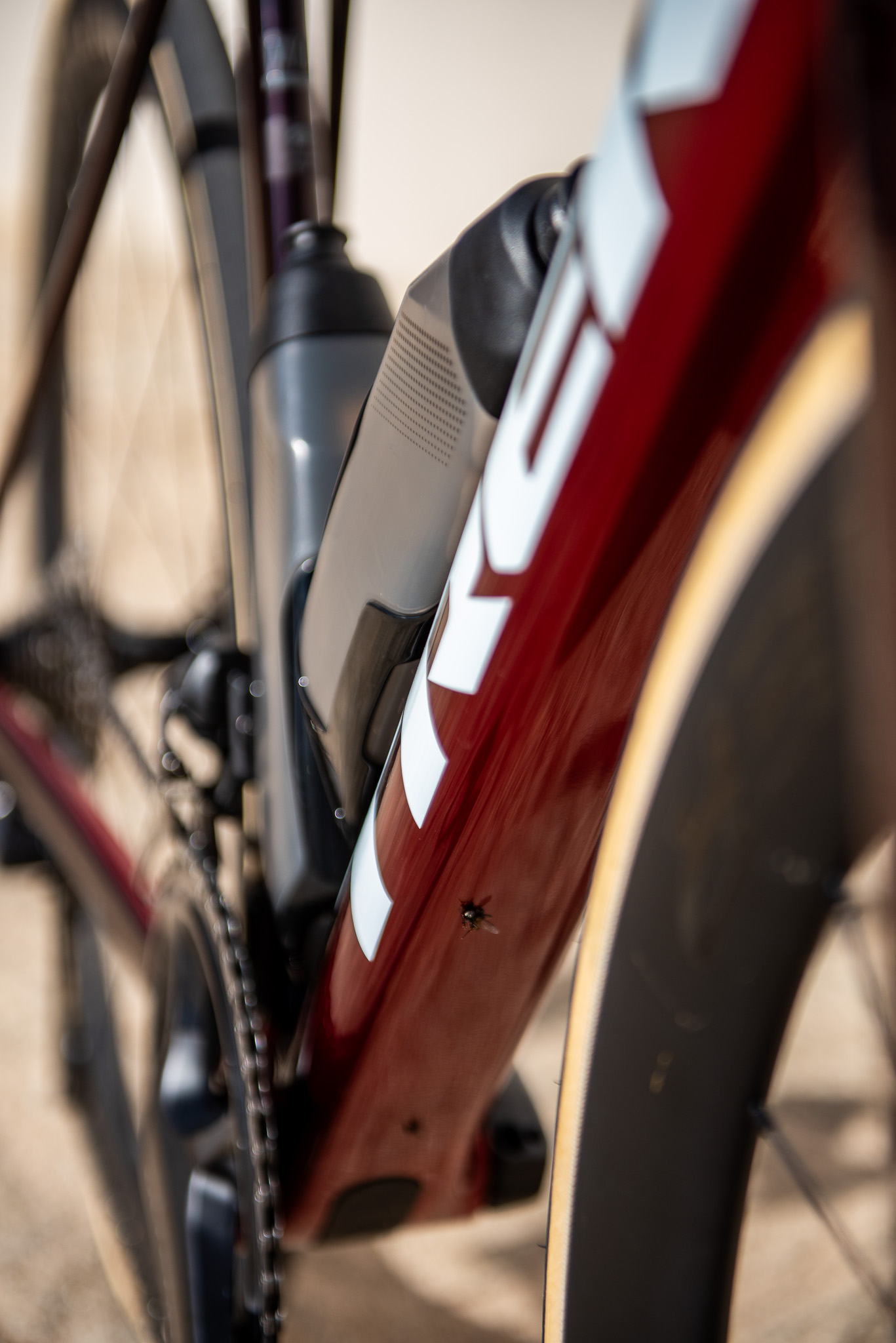
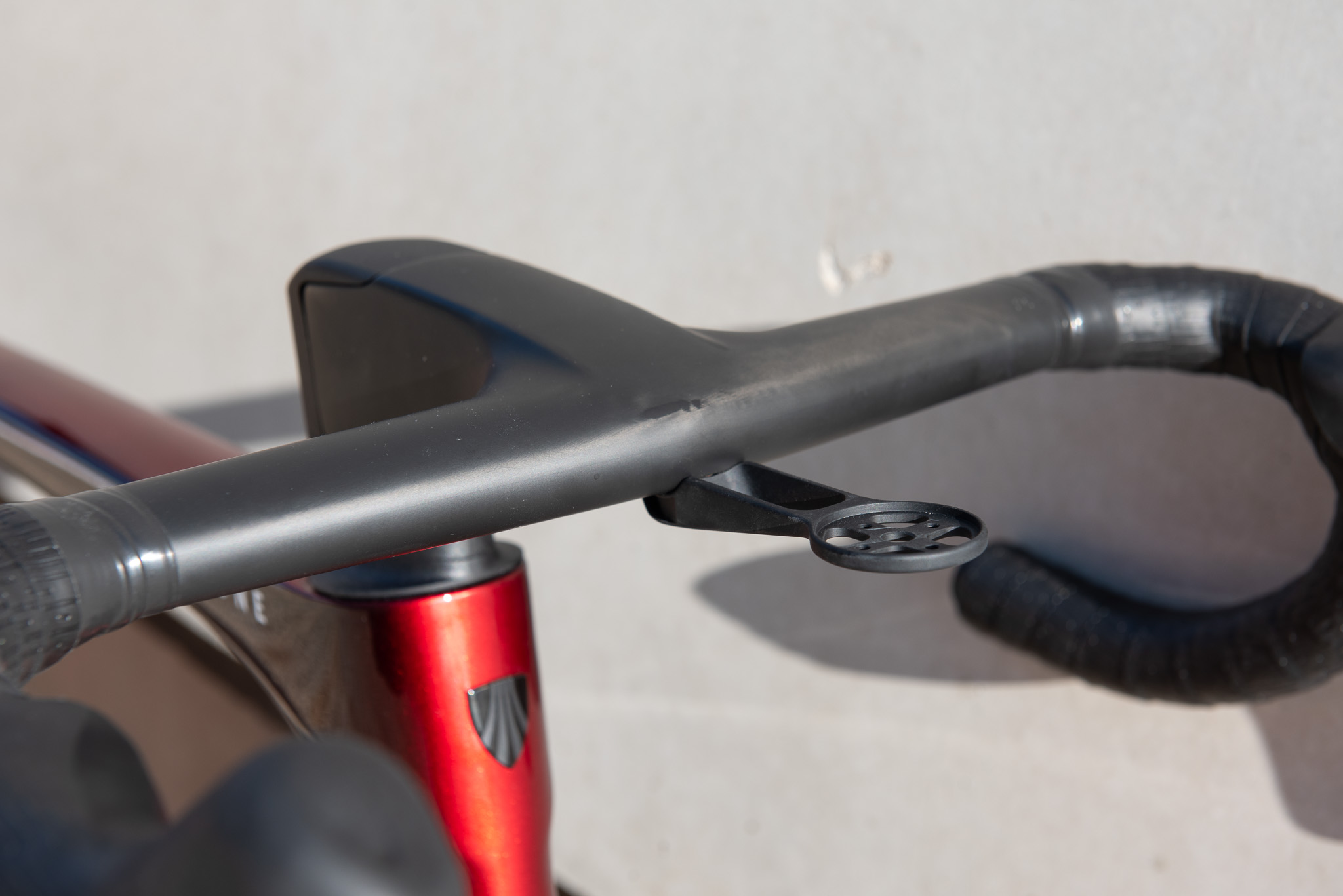
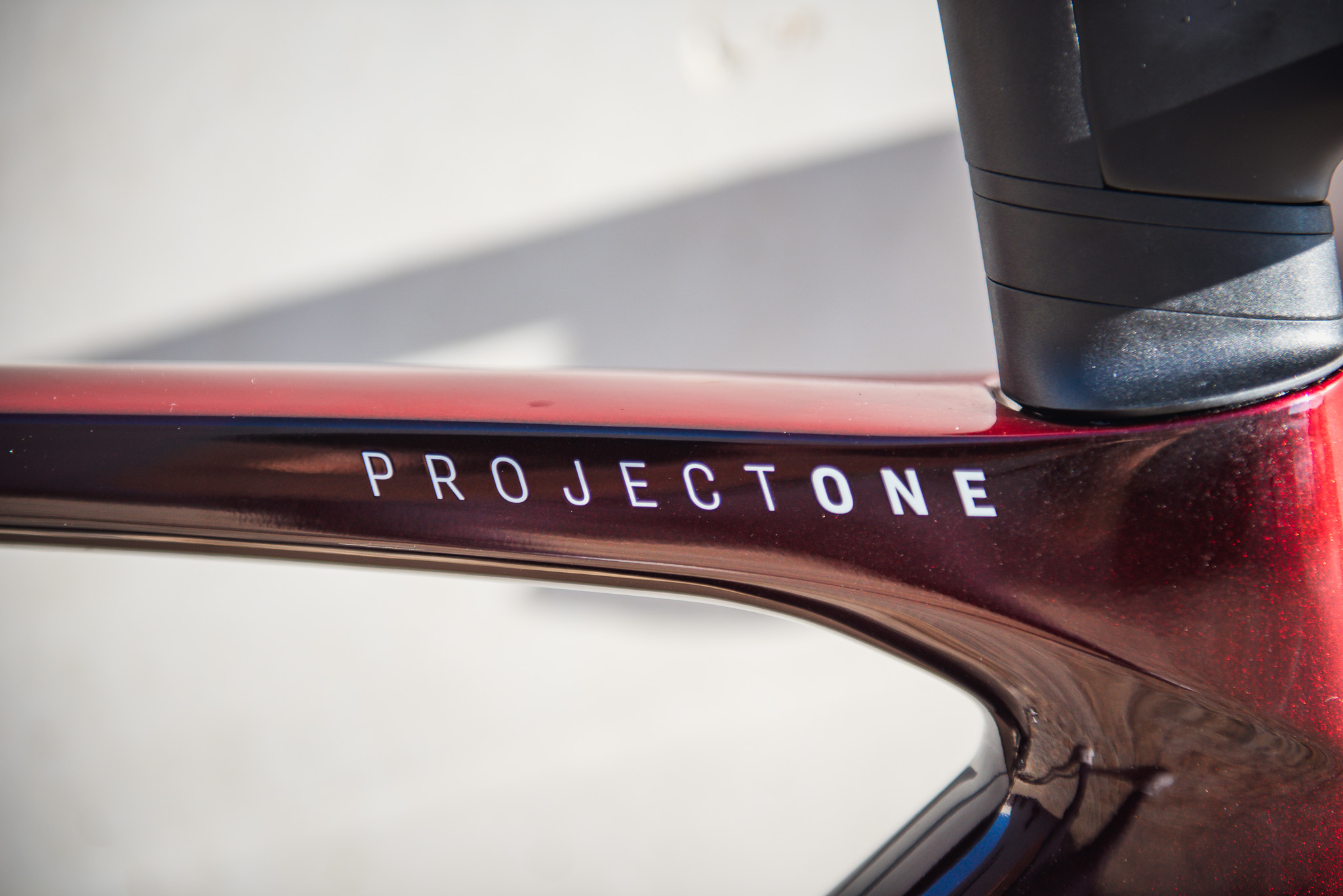
“These bottle cages are compatible with round bottles,” explains Adam Bird, Trek’s Design Engineer for the Madone. “So from a practical perspective, it's something that we expect the pro riders to be trying at the Tour de France – they're actually intending on using aero bottles at the tour. But they need to be able to grab any water bottle from any team or any neutral service and be able to put it in there. So we're balancing the aerodynamic performance with practical performance.”
In terms of breaking through to riders in the WorldTour where in the past the idea may have been dismissed as impractical, Bird argues, "There's a difference in the rider mentality… a lot of the riders now in the peloton are really young. They're very interested in learning about all those slight performance gains that they could potentially find.”
“Ten years ago, we would have shown them this water bottle and they would be like: screw off! There's no way we're gonna practically try them in a peloton. Three Watts? We don't really care about that.”
Jonathan Milan won stage 17 of the Tour de France this year with two of these bottles in his cages, so it seems safe to assume riders have bought into the aero gains from the bottles.
The bottles are still not able to be stacked upright, given their angular nature. So don’t pop it on a table ready for a refill.
The change is a bold one given the cycling community’s aversion to change, and for now will be shipped as standard only with SLR – the bottles will be an add-on for lower-tier SL bikes (hence making them comparatively slower than the outgoing Madone SL).
Pricing and spec
The new Madone is set to go from a 105-equipped SL5 for £3,250.00 ($3,499.99) to a £16,350 ($15,499.99) Madone SLR 9 AXS P1, with the only deviation in the frame itself being 500 series OCLV in the SL vs new 900 series OCLV in the top-tier SLR. The SLR is also compatible only with electric drivetrains.
I rode the third-tier SLR 7 with Ultegra Di2 (and later the SLR 7 AXS), which hits the most competitive price point for a high-end racer, with the Ultegra Di2 version coming in at £7,250 ($8,999) and the Force AXS-equipped model at £7,700 ($9,499).
The pricing falls almost directly on the same level as a Tarmac SL8, and with regional discounting likely to put the Madone in a competitive territory with a Cannondale SuperSix and even a similarly specced Canyon Aeroad.
Needless to say, the Madone SLR 9 AXS P1 is audaciously expensive, with a premium top-tier classification that seems to inflate its price beyond the pure margin gap in spec terms. The prices also seem to have fluctuated somewhat, increasing at the top end since I attended the launch.
In terms of more practical consumers, the Madone is impressively competitive in price terms, given Trek's reputation for eye-watering price tags for its flagship offerings.
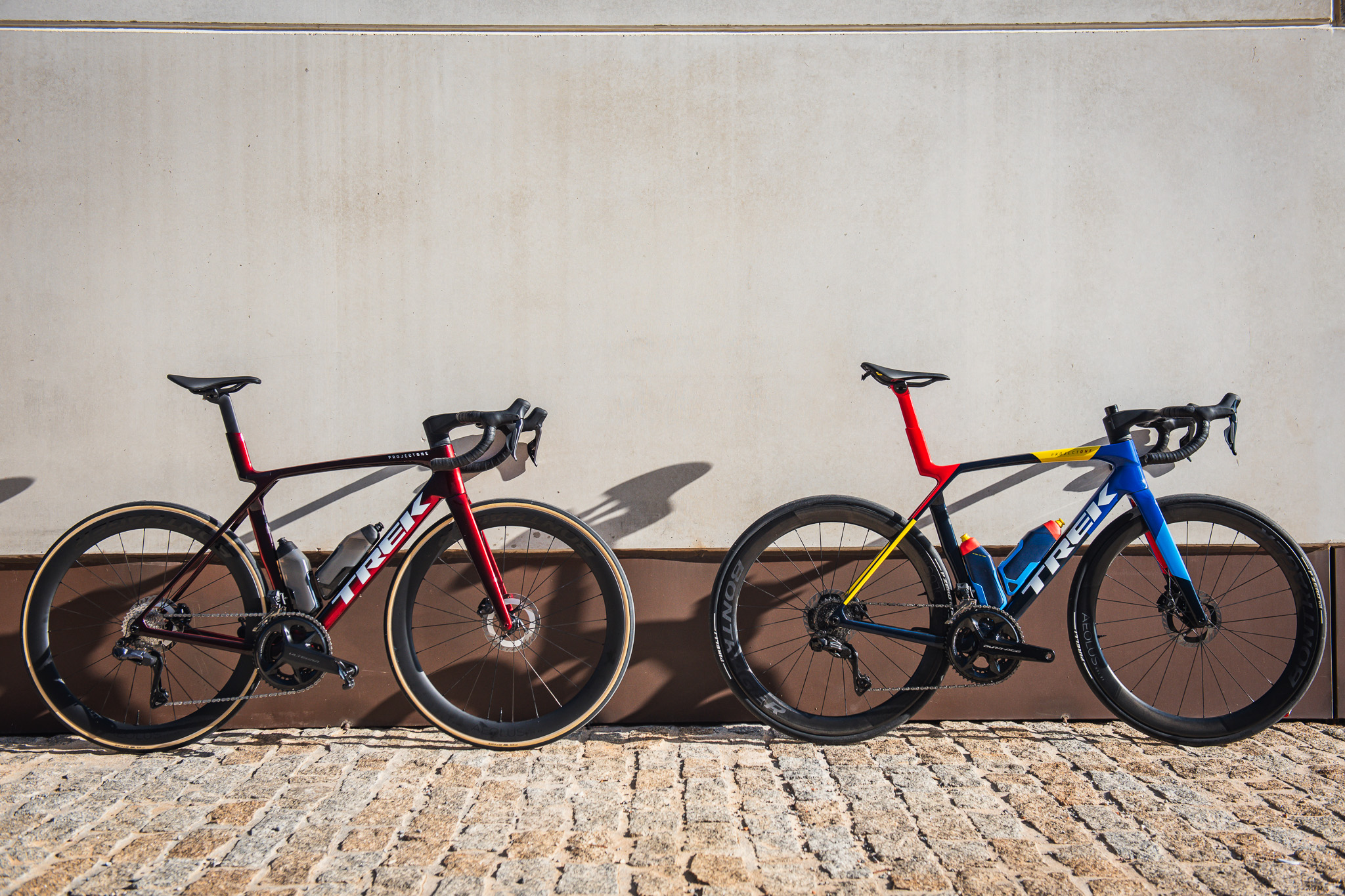
Interestingly, choice has been a little restricted on sizing as the overall offering has shrunk from eight sizes to six.
“We had a lot of sizes that had a lot of overlap,” Roessingh explains. “Many riders could actually ride two different sizes, and that created some confusion about just what frame size to ride, as there were some that were like unbelievably close to each other.” In some cases as little as a 4mm difference in stack height.
The fewer sizes are billed as reducing confusion and consolidating the design of each size. The cynic in me naturally assumed that there was perhaps some manufacturing saving at work there, but at the global launch, Roessingh walked me through some of the logistics of manufacturing on the scale needed for the Madone. Essentially, reducing eight moulds to six may offer substantial savings for a small frame manufacturer, but when selling thousands of frames per year, the turnaround of worn moulds means fewer mould sizes doesn’t necessarily mean fewer moulds.
The Ride
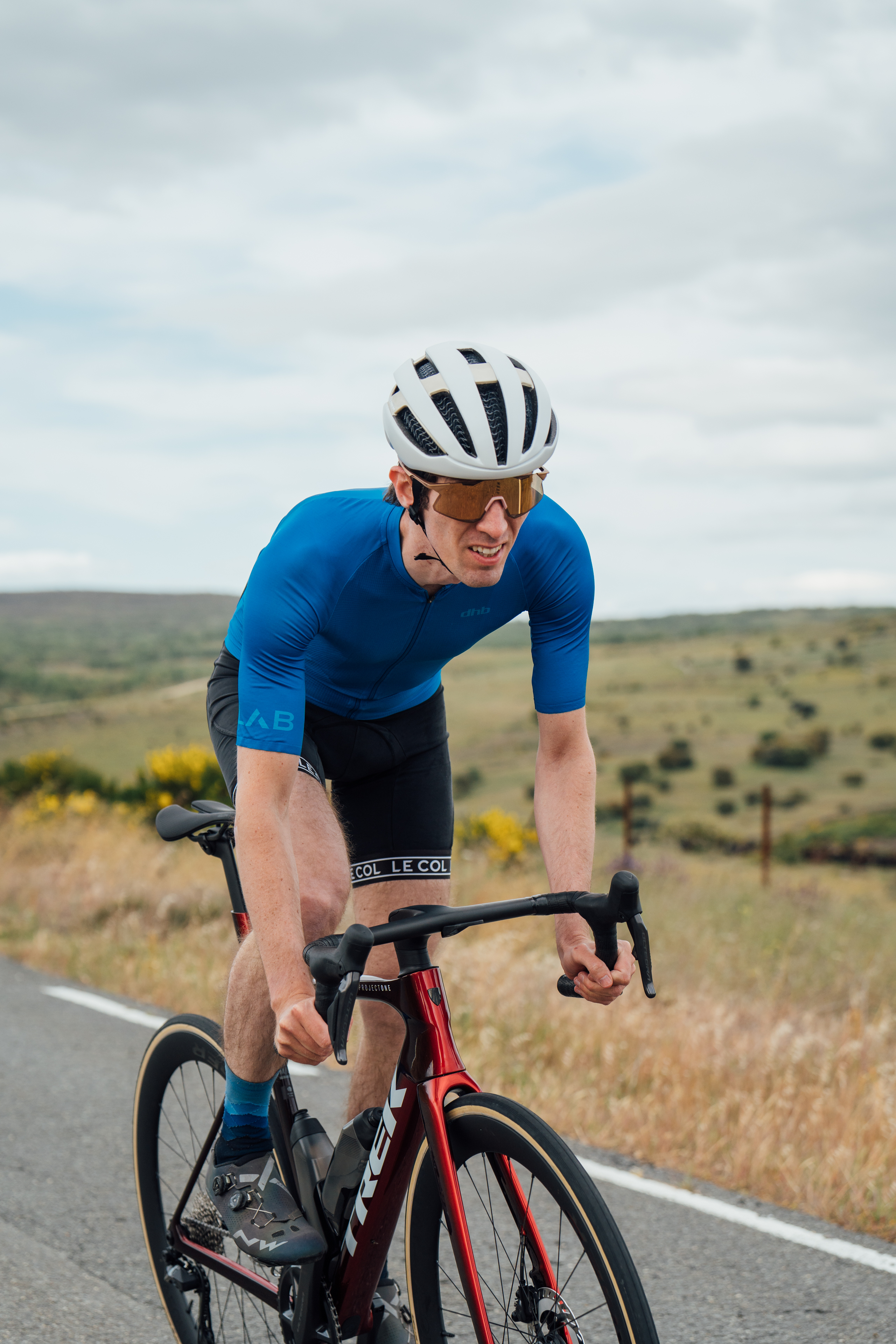
I first rode the Madone at Trek’s global launch, which took place near Cebreros in a mountainous corner of the Castile and León region in Spain. Our ride took us directly into the mountains and into open, windy plains.
I was riding the second-tier (Ultegra Di2-equipped) SLR 7, though it was identical to the top-spec SLR 9 as far as the frame design and material. No surprise, then, that there was an immediate sense of speed, power transfer and sharpness riding the Madone.
The previous aero-focused Madone always excelled in comfort. However, its bulky tubes ultimately gave it the sensation of driving a beefy sports car, while the new SLR not only felt palpably lighter but seemed so much closer to the Emonda in general ride quality. This has the sharp turn of speed and lively handling of a lightweight climber while promising the same speed as an all-out aero machine.
When it comes to all-out speed, it’s very hard to quantify that through a pair of initial test rides. Perhaps the best I could say is that it carried speed well on flat terrain, and at times felt simply blisteringly fast, and was truly a beast on the descents.
It had been too long since I’ve been on a long alpine descent, and despite the relatively shallow inclines, I found myself happily edging toward 80kph. The Madone definitely dared me to take more speed into corners, with a rigid handling character and sat extremely steadily at high speed.
While I always rated the IsoSpeed system for its abundant comfort, the slight detachment between the front and back of the bike with the 9 series was a bit of a sacrifice for the resulting ride quality. With the IsoFlow system, I didn’t notice any discomfort or bumps on the rear end that I felt needed to be filtered out, and the reward in weight and connection to the road was palpable.
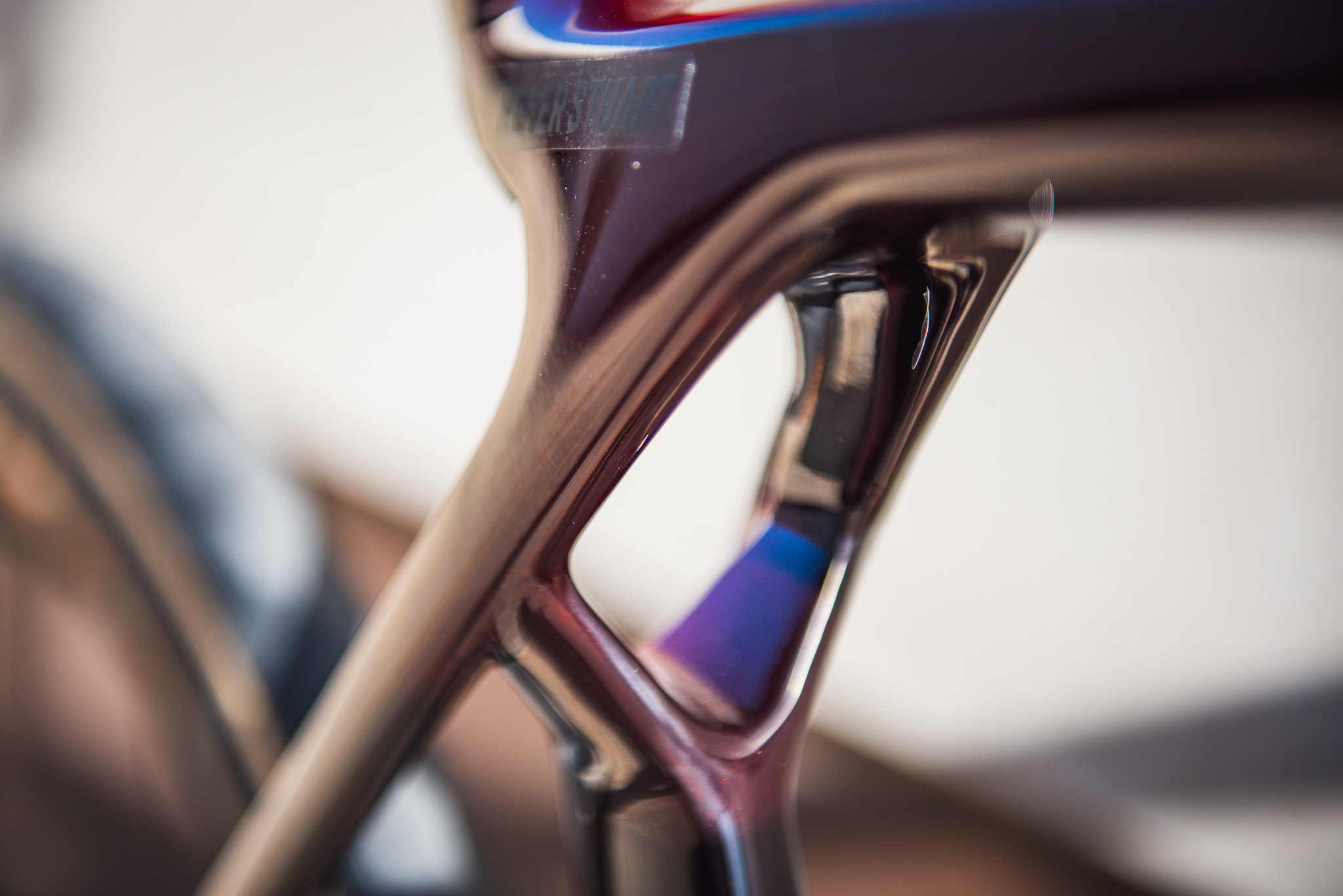
The finishing kit tweaks were probably the most surprising element of my time with the Madone. The squeezed-in handlebar hoods make so much sense. The slight splay in a bar has long been a trend in gravel - offering the wider drops for stability and the narrow for speed. It works very well on the Madone, and I was left wondering why we ever bother with hoods that are 42cm apart.
The bottles were easy to handle and never once a hassle to stow or release from the cage.
That was about the only trade-off in my longer-term ride experiences with the Madone, which lived up to all the excitement of those first miles on smooth Spanish roads.
The test of time
Global launches on smooth mountain roads are a true luxury of our trade, and also a distortion of the day-to-day reality of owning a bike. So I was intrigued as to how my sparkling initial impressions would change over the months spent on home roads.
I rode the Madone over a three-month period, in a slightly different spec with a switch to Sram Force AXS on an otherwise identical build, and I was perpetually impressed by the Madone's fusion of the best of Trek's bike-building knowledge.
Overall, my lasting impression of the Madone is of a startling balancing act. Over road scarring and rougher terrain, it rides like a Domane, but when putting it against the clock, it was purely rapid.
Unlike the Madone 9 series, which I recall fondly for its chunky and unapologetic sense of speed, the Gen 8's stability and comfort even concealed its speed at times – like driving on a motorway at 70mph rather than bouncing down a rough gravel track at 30mph, the Madone could feel so planted that the speed almost crept up on you.
Of course, when it comes to speed, sensation is subjective, and numbers don't lie. Hence, why at Cyclingnews, we have plenty of numbers from our series of Labs wind tunnel tests.
In our Superbike wind tunnel test in 2024, the Trek Madone (this very bike, in fact) came out second to the Specialized Tarmac when tested with a rider on the bike.
As our wind tunnel test surfaced, even substantial gains in a frame's aerodynamics are relative, easily eclipsed by small variations in rider position. With that in mind, I would probably opt to switch in normal water bottles in the long term on the Madone, perhaps saving the aero offerings for race days.
Over time, though, they did occasionally irk me when hastily popping them on a table or juggling several bottles of store-bought water for a mid-ride refill. It's a small compromise, but it is a slight trade-off in usability for the billed aerodynamic gains.
Yet, despite being billed as an aero bike, this really isn't the strength of the Madone. It represents the same leap forward we saw when Specialized phased its Venge into the Tarmac – retaining the aerodynamic prowess but not making it centre stage. Instead, what Trek has delivered is a really rounded ride.
The Madone feels so planted. While handling was never a weakness with the previous generations of pure aero, the disconnection from the road of the IsoSpeed unit did make the ride uncertain at times. Now there's both a sense of deep connection to the road, but also complete insulation from the imperfections of the surface.
The overall effect was such easy speed. I was in a position where I could just ride to my complete limit in comfort, but also thoroughly enjoy the ride.
After a few fast laps of my local circuit, I was almost in disbelief at the time that popped up on my Garmin, as that stable, smooth ride almost concealed the speed.
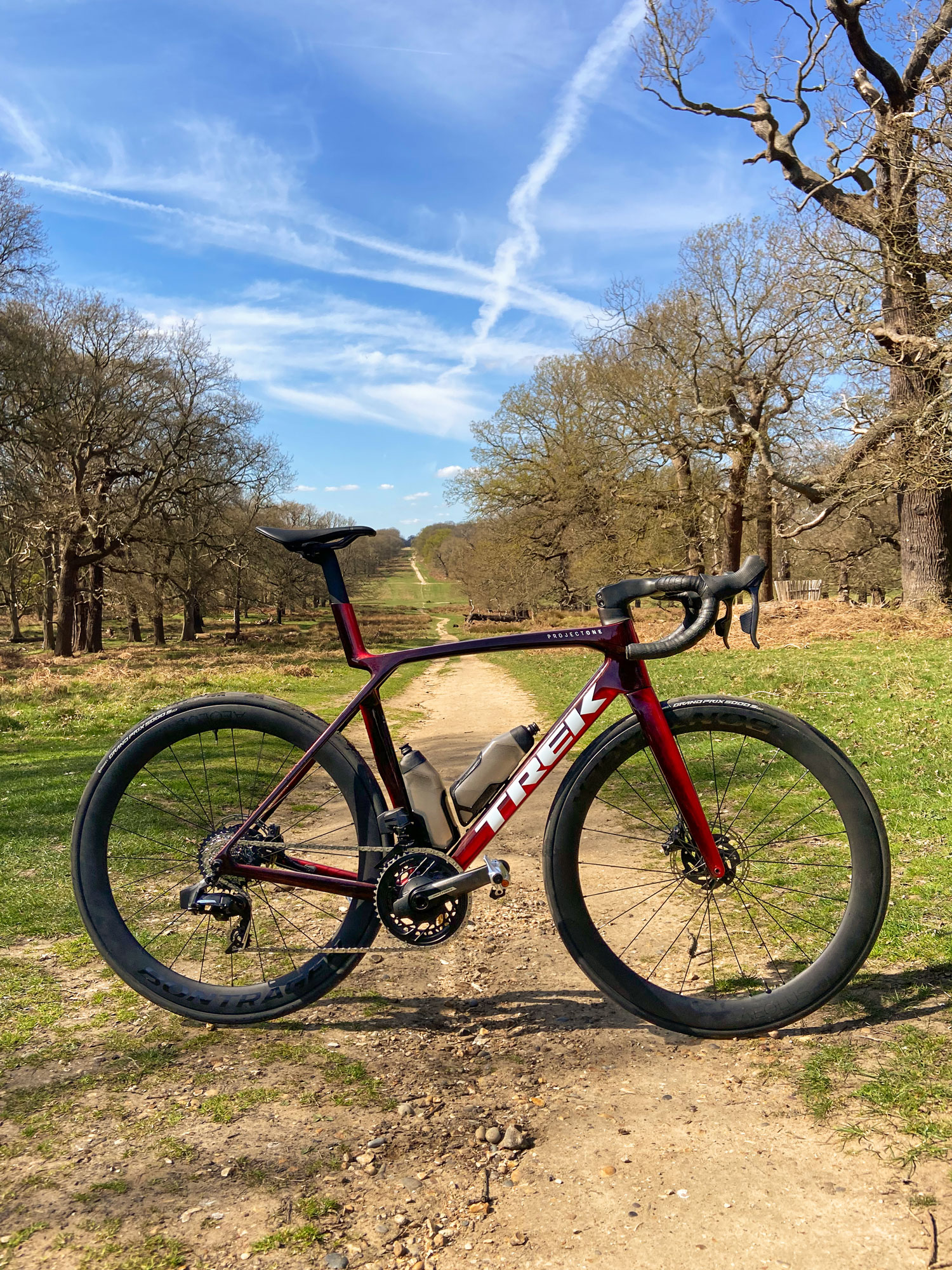
Versatility
While the Madone really nails the brief when it comes to endurance racer and all-out aero bike, when it comes to real comfort and all-terrain versatility, it does still err on the aggressive side and clearly polarises itself from the more all-rounder Domane.
In terms of geometry, for my ML size it sports a middling 150mm headtube length against a 56cm toptube, and a 73.5° headtube and seatube. All that makes for a racey fit, and limits the all-day comfort which is still the territory of the Trek Domane. That's fair enough, Trek has a bike for comfort, and this is squarely for speed, but it still spreads its net wide.
As our in-depth tyre tests showed, wider is increasingly the obvious choice in terms of overall speed and ride quality. Our Labs tests showed that in most cases, 40mm is the fastest tyre available, while the Madone has 33mm clearance. The Madone actually beats most of its aero bike competitors comfortably here - with the SL8, Giant Propel and Colnago Y1RS all sporting a minutely narrower 32mm clearance. The science seems to be increasingly concluding that wider is better, but for now, the Madone represents all the versatility we'd expect from an aero or endurance racer.
Stretch our perspective back to the bikes of a decade ago, where 25mm clearance was sometimes a push, and the versatility on offer is startling for an aero bike.
In my time with the Madone, it easily tackled cobbles or stretches of gravel track, even if there may be a future where its clearance seems conservative.
Another element of versatility sits with pure climbing, where the outgoing Emonda was most highly prized. For those eager pro tech obsessives, the trend toward aero bikes on major Grand Tour climbs is unlikely to have passed you by. Jonas Vingegaard and Tadej Pogačar almost exclusively used their bike sponsor's aero offerings at the Tour de France in 2025.
The aero gains still make for big margins on long ascents, while stiffness and power transfer is a critical determinant in a bike's climbing ability. Add to that that the Madone comes in as one of the very lightest aero bikes – with this model weighing in at 7.4kgs without pedals – and this is very much an obvious choice for long days in the mountains.
For weight weenies, though, the 300-500g saving from a similarly-specced Cannondale Supersix or Specialized Tarmac may hold appeal.
Verdict
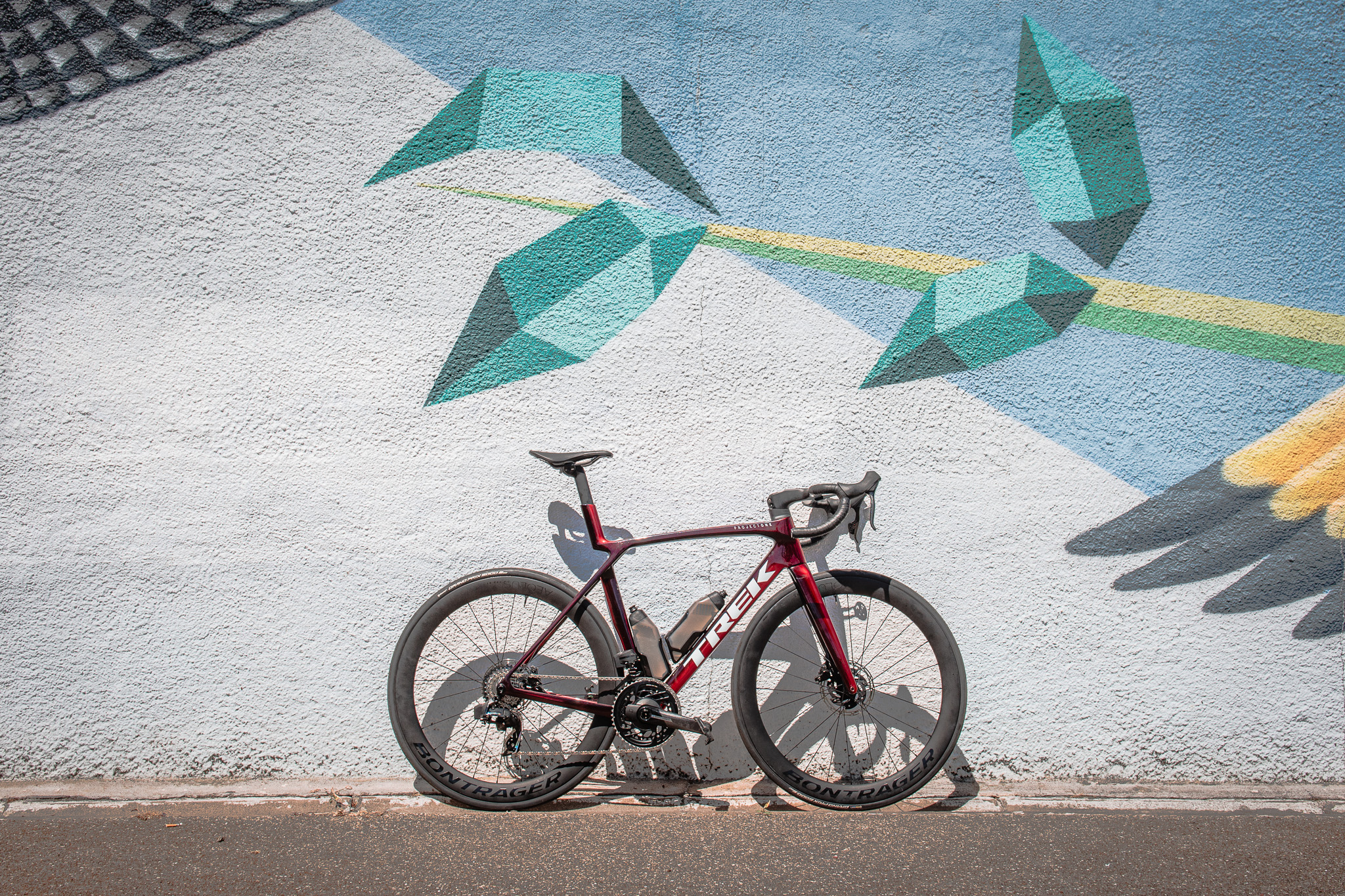
For me, the Madone really shows the maturity of cycling tech at its best. While it’s common to chase wattage gains from minor frame changes, Trek is right to focus on the bike holistically from an aero perspective, where a saving of 3 watts on the bottles could eclipse huge cost and weight gains if those same aerodynamic margins were sought on the frame.
Meanwhile, to hit 7kg (in the top-spec SLR 9 and 7.4 kg in this spec) with range-topping aerodynamic and stiffness performance is something we didn’t dream of with a disc brake road bike even five years ago. That comes with the benefits of wider tyres and a better experience across climbing, descending and sprinting, alongside great comfort.
Of course, in the field of the best aero bikes it is not unique there. The closest rival is undoubtedly the Specialized Tarmac SL8, and much like the margin of error in our wind tunnel testing, you wouldn't struggle to pick these two apart in performance terms, and I'd instead split largely by brand preference and the personal appeal of their individual builds and finishes.
Indeed, even despite the high price point for a Ultegra Di2 or Force Axs build, Trek doesn't trade heavily in the premium of the brand name, and comfortably earns its price in performance terms. Add to that this, for me at least, this is one of the most stunning bikes in aesthetic terms on the market.
I struggled to fault the Madone, and it ranks extremely high in the list of all-time favourite bikes across my years of testing - even if it lacks the distinctiveness to top that list.
For any road-minded fan of speed, ride quality and world-leading bike engineering and manufacturing, the Trek Madone really does do it all.
Attributes |
Notes |
Rating |
|---|---|---|
Design and aesthetics |
It's one of the most striking bikes on the market, with the distinctive seattube offering a unique signature. The overall design is highly impressive - preserving the exceptional aerodynamics of the outgoing Madone while retaining the low weight of the Emonda. |
9/10 |
Build |
The spec options across the board are well-conceived from affordable to luxury, aided by Trek and Bontrager's fantastic pedigree in components, wheels and finishing kit. |
10/10 |
Performance |
Hard to fault. One of the fastest in our Labs tests, a fantastic ride quality, honed handling, and a hugely versatile character. |
10/10 |
Weight |
For an aero racer, hitting 7.4kg is a great achievement, albeit not class -leading. |
9/10 |
Value |
There's no debating this is an expensive bike, but in the tested spec it remains competitive |
7/10 |
Overall |
46/50 (92%) |







